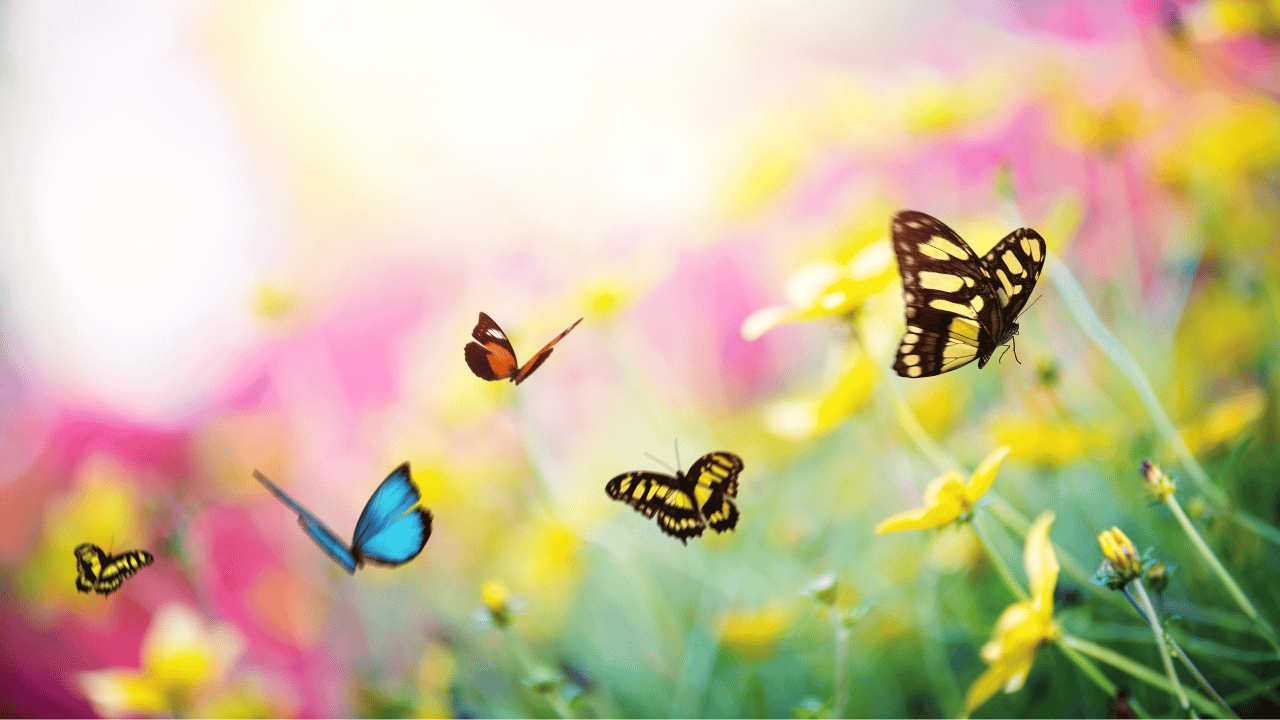Imagine stepping into your backyard and being greeted by the gentle fluttering of vibrant butterflies. These delicate creatures don’t just bring beauty—they create a peaceful atmosphere that soothes the soul. Creating a butterfly garden doesn’t have to be expensive or complicated. With a little planning and creativity, you can transform your outdoor space into a haven for butterflies, all while staying within your budget.
Good health allows you to enjoy nature to its fullest. Visit SeniorHMOplans.com to explore health plans designed for vibrant living.
Step-by-Step Guide to Creating a Butterfly Garden
- Choose the Right Location:
- Butterflies love sunny spots, so pick an area with at least 6 hours of sunlight daily.
- Ensure the space is sheltered from strong winds, as butterflies prefer calm environments.
- Select Native Plants:
-
- Native plants are easier to grow and provide the food butterflies need. Look for flowers like milkweed (for Monarchs), black-eyed Susan, and butterfly bush.
- Incorporate both nectar plants for adult butterflies and host plants for caterpillars to complete their life cycle.
- Create Butterfly-Friendly Habitats:
-
- Add flat stones where butterflies can bask in the sun to warm their wings.
- Create a puddling station by placing a shallow dish of water with sand or stones for butterflies to drink and absorb minerals.
- Use Affordable Gardening Techniques:
-
- Collect seeds from friends or community gardening groups instead of buying new ones.
- Repurpose containers or use recycled materials for plant pots.
- Mulch with grass clippings or shredded leaves to retain soil moisture and reduce costs.
- Keep It Simple:
-
- Start small with a few plants and expand as you become more confident.
- Enjoy the process—it’s as much about creating a relaxing space for yourself as it is for the butterflies.
Practical Tips for Success
- Plan for Blooms Year-Round: Choose plants that bloom at different times of the year to keep your garden vibrant and full of visitors.
- Avoid Pesticides: These can harm butterflies and other beneficial insects. Use natural solutions to manage pests instead.
- Group Plants: Place similar plants together to make it easier for butterflies to find food.
Common Questions Answered
- What plants are best for attracting butterflies?
- Milkweed, lantana, and zinnias are excellent nectar sources, while parsley and dill make great host plants for caterpillars.
- How do I create a butterfly garden in a small space?
-
- Use pots or vertical planters on a balcony or patio. Even a small garden can attract butterflies if it includes their favorite plants.
- Can I include other pollinators in my garden?
-
- Absolutely! Bees and hummingbirds often visit the same plants as butterflies, making your garden a buzzing oasis of activity.
Why Butterfly Gardening Is Perfect for Seniors
Butterfly gardening isn’t just about flowers and insects—it’s about connecting with nature and finding joy in simple pleasures. Watching butterflies flit from bloom to bloom is both relaxing and inspiring. The physical activity of planting and maintaining a garden keeps you active, while the peaceful environment promotes mental well-being.
Creating a butterfly garden can also be a social activity. Invite friends or neighbors to share seeds and gardening tips, or host a garden tour to showcase your efforts. The rewards go beyond aesthetics, providing a sense of accomplishment and a deeper appreciation for the natural world.
Turn your backyard into a haven for butterflies and your soul. Visit SeniorSearching.com for more tips and inspiration!


